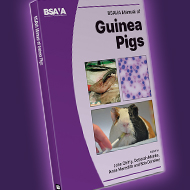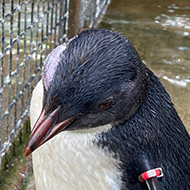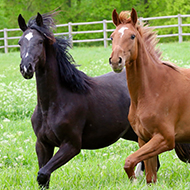Norwegian reindeer have ‘purged’ unhealthy mutations.
A study has found that inbreeding resulted in unexpected benefits among reindeer on an archipelago to the north of mainland Norway.
The results found that long-term inbreeding may have actually enabled the species to ‘purge’ unhealthy and deadly mutations over time.
The researchers, from Norwegian University of Science and Technology, studied the reindeer on the arctic archipelago of Svalbard. Despite only a small number migrating to Svalbard 7,000- 8,000 years ago, there is now a population of more than 20,000 animals.
This increase in population interested the scientists, as it subverts the evolutionary theory which suggests that inbreeding in small populations leads to harmful mutations and genetic variants that result in disease and death.
In contrast, the Svalbard reindeer have actually developed helpful adaptations to their environment, including being smaller in size and having shorter legs than northern reindeer and caribous. They are also able to digest mosses when lichen is unavailable, and can adjust their circadian rhythm to seasonal variations.
Their isolated nature, as well as a near-extinction event in the early 1900s from hunting, means that Svalbard reindeer will have encountered a population ‘bottleneck’, making them well-suited for studying genetic problems.
The researchers believe that the high level of inbreeding actually allowed the population to get rid of harmful mutations, in a phenomenon called ‘purging’.
Where high levels of inbreeding take place, some offspring are likely to inherit harmful mutations from both the mother and father. These mutations cause the young to develop genetic diseases and poor health, which result in them having fewer offspring of their own, or dying before they can reproduce. This means that the dangerous mutations are less likely to pass to future generations.
A similar phenomenon is seen among kākāpō parrot in New Zealand, which lived isolated for 10,000 years before becoming endangered after a non-native species was introduced. In 1995 only 60 parrots remained. However a long period of inbreeding eradicated harmful genetic variants, increasing the population to around 200.
The scientists’ findings have changed their studies of genetic bottlenecks, as the Svalbard reindeer appear to remain in good condition following the inbreeding. It also opens up future research opportunities into the speed at which harmful mutations disappear, using DNA samples from reindeer that lived several thousand years ago.
However, the researchers are less confident about the reindeers’ ability to adapt to the changes caused by climate change. They suspect that their adaptations for the extreme arctic climate may not be suitable for the rapidly warming archipelago, where vegetation and snow cover is changing.
Brage Bremset Hansen, a professor of conservation biology, said: "Global warming is causing Svalbard’s climate to change faster than anywhere else in the world. Even though our results show that the Svalbard reindeer managed to adapt relatively quickly to a completely new environment after they colonized the islands, they might have trouble adapting to today's rapid warming,
“They may have simply lost too much genetic variation.”
The full study can be found in the journal iScience.
Image © Shutterstock






 The Federation of Independent Veterinary Practices (FIVP) has announced a third season of its podcast, Practice Matters.
The Federation of Independent Veterinary Practices (FIVP) has announced a third season of its podcast, Practice Matters.
